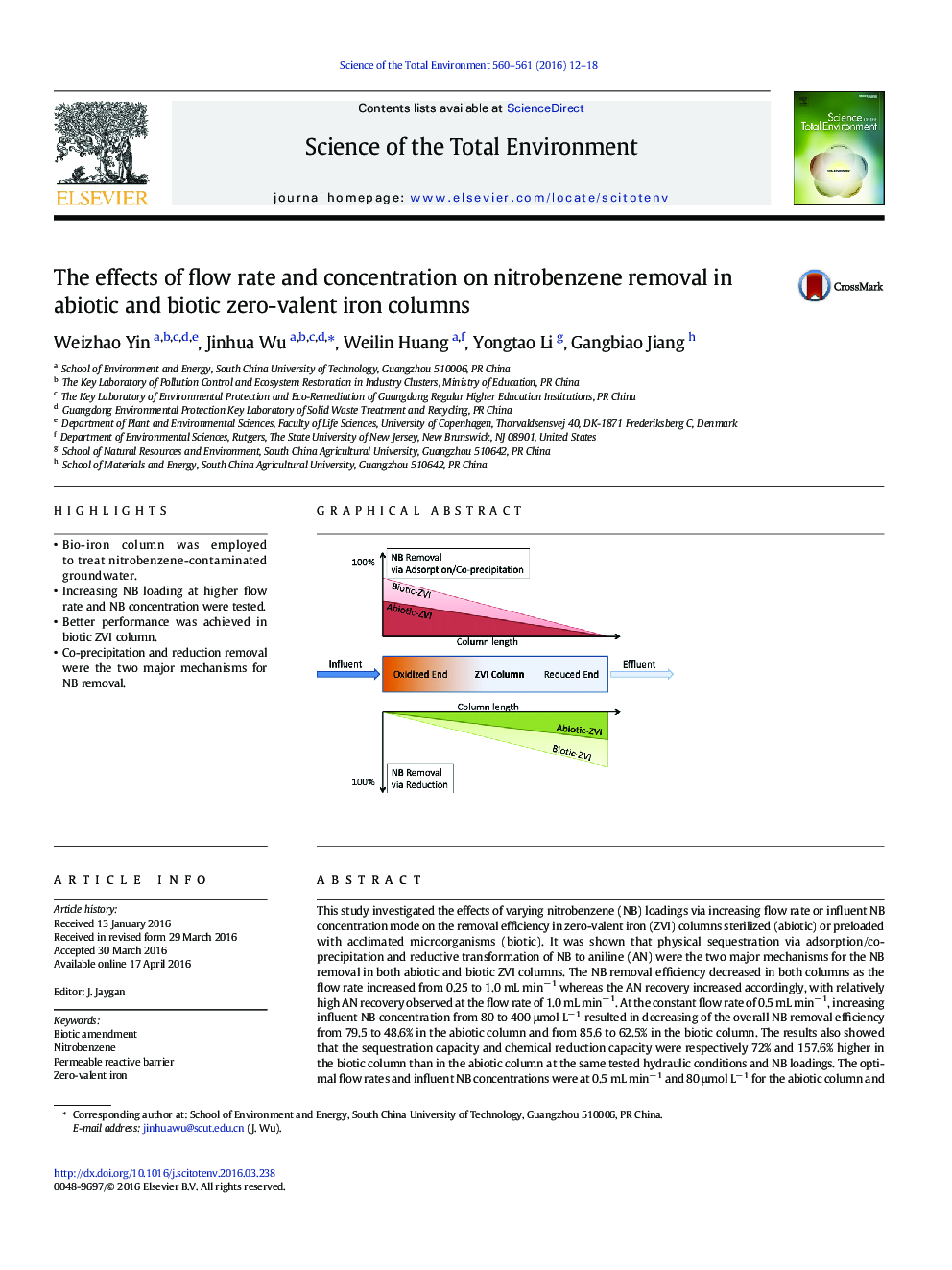| کد مقاله | کد نشریه | سال انتشار | مقاله انگلیسی | نسخه تمام متن |
|---|---|---|---|---|
| 6321265 | 1619727 | 2016 | 7 صفحه PDF | دانلود رایگان |
- Bio-iron column was employed to treat nitrobenzene-contaminated groundwater.
- Increasing NB loading at higher flow rate and NB concentration were tested.
- Better performance was achieved in biotic ZVI column.
- Co-precipitation and reduction removal were the two major mechanisms for NB removal.
This study investigated the effects of varying nitrobenzene (NB) loadings via increasing flow rate or influent NB concentration mode on the removal efficiency in zero-valent iron (ZVI) columns sterilized (abiotic) or preloaded with acclimated microorganisms (biotic). It was shown that physical sequestration via adsorption/co-precipitation and reductive transformation of NB to aniline (AN) were the two major mechanisms for the NB removal in both abiotic and biotic ZVI columns. The NB removal efficiency decreased in both columns as the flow rate increased from 0.25 to 1.0 mL minâ 1 whereas the AN recovery increased accordingly, with relatively high AN recovery observed at the flow rate of 1.0 mL minâ 1. At the constant flow rate of 0.5 mL minâ 1, increasing influent NB concentration from 80 to 400 μmol Lâ 1 resulted in decreasing of the overall NB removal efficiency from 79.5 to 48.6% in the abiotic column and from 85.6 to 62.5% in the biotic column. The results also showed that the sequestration capacity and chemical reduction capacity were respectively 72% and 157.6% higher in the biotic column than in the abiotic column at the same tested hydraulic conditions and NB loadings. The optimal flow rates and influent NB concentrations were at 0.5 mL minâ 1 and 80 μmol Lâ 1 for the abiotic column and 2.0 mL min-1 and 240 μmol Lâ 1 for the biotic column, respectively. This study indicated that microorganisms not only enhanced overall reduction of NB, but also facilitated NB sequestration within the porous media and that the optimal loading conditions for overall removal, sequestration, and reduction of NB may be different. Optimal operation conditions should be found for preferred sequestration or transformation (or both) of the target contaminants to meet different goals of groundwater remediation with the ZVI-PRB systems.
137
Journal: Science of The Total Environment - Volumes 560â561, 1 August 2016, Pages 12-18
